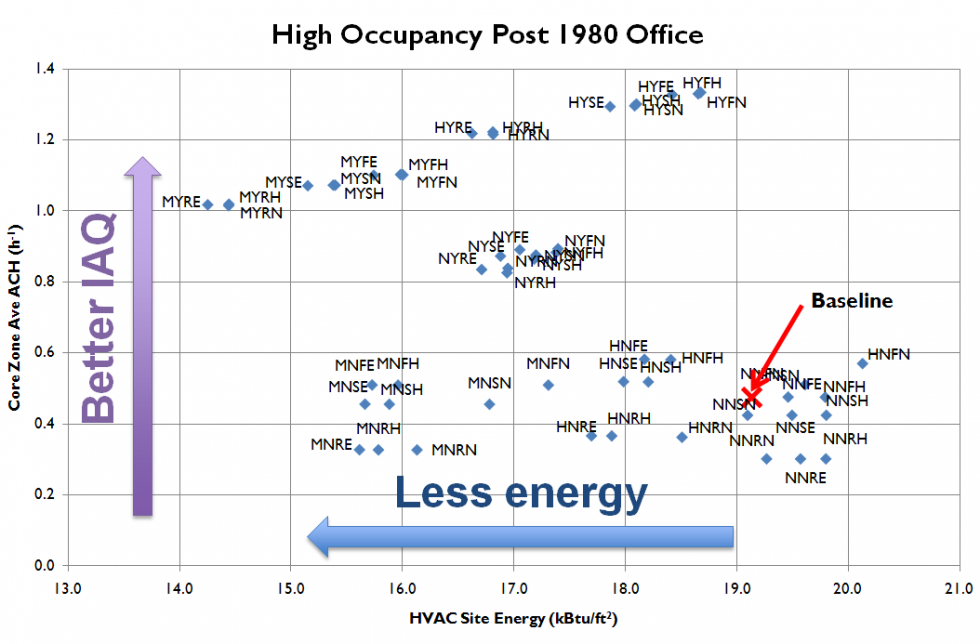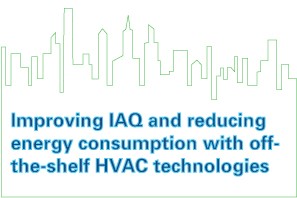Project Title:
Improving IAQ and reducing energy consumption with off-the-shelf HVAC technologies
Principal Investigator:
Michael Waring
Co-Investigator:
Adams Rackes
Sponsors:
Energy Efficient Buildings (EEB) Hub of the US Department of Energy
Funding agency:
Energy Efficient Buildings (EEB) Hub, as part of the multi-institution project Integrated Energy Efficient Space Conditioning and Air Quality Management Systems
Funding period:
February 2012 – February 2013
Project Abstract:
Commercial buildings provide ventilation with outdoor air to promote indoor air quality (IAQ), a practice that may be energy intensive when the weather is cold or hot and humid. This project considers four mature technologies that can be deployed singly or in concert to shift the tradeoff point between good IAQ and energy savings. The technologies are:
- supply air temperature (SAT) reset, or modulating the SAT setpoint higher when the cooling demand in the most intensive zone allows for it;
- economizer operation, or increasing outdoor air flow above the minimum to provide inexpensive cooling when possible;
- demand controlled ventilation (DCV), or dynamically resetting the minimum ventilation rate based on current occupancy;
- and heat recovery (HR) to transfer heat and/or moisture from the exhausted air to the ventilation (or makeup) air.
All of these technologies are available off-the-shelf, but their utility depends on the combination of them present, the balance of driving building physics forces—which in turn depends on building type, age, construction, climate, and season—and the aptness of the control sequence. This project seeks to understand these effects, estimate IAQ and energy benefits, and provide clear guidance for combining and controlling ventilation-related technologies, with a focus on cost-effective retrofits in existing commercial buildings.
This parametric modeling study begins with the US DOE’s Commercial Reference Buildings EnergyPlus models and modifies them to incorporate all combinations of the four technologies. Office and educational buildings with multiple system types, vintages, and sizes are included. The project will clarify which building parameters affect performance, identify integrated technology packages that provide the best results for each building group, quantify their IAQ and energy benefits, and recommend control sequences for their operation. The aim is to promote an integrated approach not only to technology and control, but also to IAQ and energy considerations, which results show need not be at cross-purposes.

